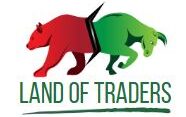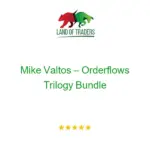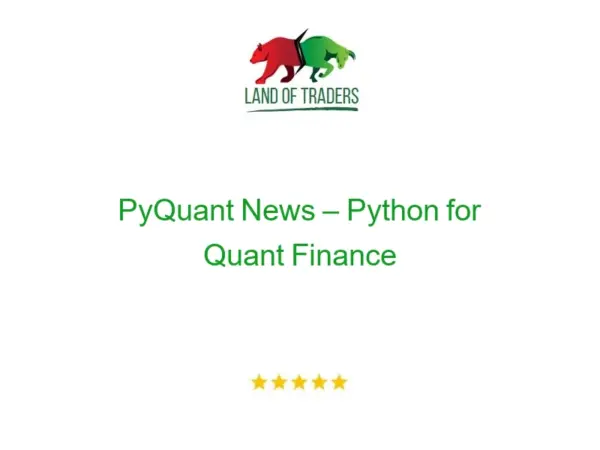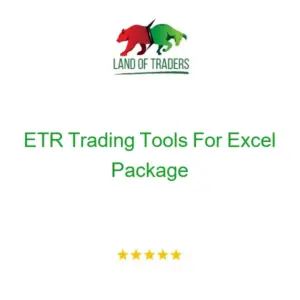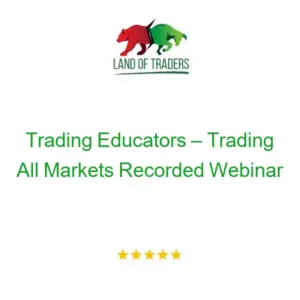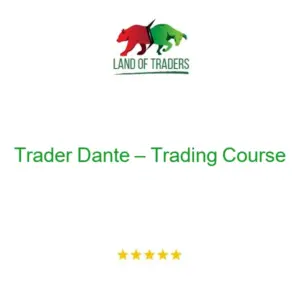Description
PyQuant News – Python for Quant Finance
The Quantitative Revolution in Finance
Modern finance is increasingly data-driven and algorithmic. Hedge funds, investment banks, and prop trading firms rely on quantitative analysts who can build sophisticated models, automate trading strategies, and analyze risk using programming languages. Python has emerged as the dominant tool because it combines:
- Ease of Learning: Readable syntax that allows focus on financial concepts rather than programming complexity
- Powerful Libraries: Extensive ecosystem specifically designed for financial analysis and trading
- Industry Adoption: Used by Goldman Sachs, JPMorgan, Citadel, and virtually every major financial institution
- Rapid Development: Prototype and deploy trading strategies faster than with any other language
Python’s Ecosystem for Financial Analysis
Unlike generic programming courses, ocuses exclusively on finance-specific applications using the professional tools that quantitative analysts use daily:
- Data Analysis Stack: Pandas, NumPy, and SciPy for financial data manipulation
- Visualization Tools: Matplotlib, Plotly, and Seaborn for professional financial charts
- Backtesting Frameworks: Zipline, VectorBT, and custom testing engines
- Risk Management: PyFolio, AlphaLens, and quantitative risk models
- Machine Learning: Scikit-learn and TensorFlow for predictive modeling
Complete Course Curriculum: From Python Basics to Advanced Quant Techniques
Foundation Track: Python for Finance Fundamentals (Modules 1-3)
Module 1: Python Fundamentals for Finance
- Financial Python Basics: Variables, data types, and control structures with finance examples
- Data Structures: Lists, dictionaries, and sets for financial data organization
- Functions and Classes: Building reusable code for trading strategy components
- Error Handling: Robust code that handles real-world market data irregularities
- Best Practices: Professional coding standards used in financial institutions
Module 2: The Python Quant Stack Mastery
- Pandas for Financial Data: Advanced DataFrame operations for price and volume analysis
- NumPy for Numerical Computing: Vectorized operations for high-performance calculations
- Matplotlib and Plotly: Professional-grade financial visualizations and interactive charts
- Data Acquisition: APIs for real-time and historical market data
- Data Cleaning: Handling missing data, corporate actions, and data quality issues
Module 3: Financial Mathematics with Python
- Statistical Analysis: Descriptive statistics, correlation analysis, and hypothesis testing
- Time Series Analysis: Stationarity, autocorrelation, and seasonal decomposition
- Options Pricing: Black-Scholes, Monte Carlo simulations, and Greeks calculation
- Portfolio Theory: Mean-variance optimization and efficient frontier construction
- Risk Metrics: Value at Risk (VaR), Expected Shortfall, and volatility modeling
Professional Track: Advanced Quantitative Applications (Modules 4-6)
Module 4: Algorithmic Trading Strategy Development
- Strategy Architecture: Professional frameworks for strategy development and testing
- Signal Generation: Technical indicators, fundamental factors, and alternative data
- Entry and Exit Logic: Systematic rules for trade execution and position management
- Position Sizing: Kelly criterion, risk parity, and dynamic allocation methods
- Transaction Cost Analysis: Modeling slippage, commissions, and market impact
Module 5: Professional Backtesting and Validation
- Backtesting Best Practices: Avoiding look-ahead bias, survivorship bias, and overfitting
- Walk-Forward Analysis: Out-of-sample testing for robust strategy validation
- Monte Carlo Simulations: Assessing strategy robustness across market scenarios
- Statistical Significance: Properly interpreting backtest results and performance metrics
- Regime Analysis: Adapting strategies to different market conditions
Module 6: High-Performance Computing with VectorBT
- Vectorized Backtesting: Running thousands of strategy variations simultaneously
- Parameter Optimization: Systematic approach to finding optimal strategy parameters
- Performance Analytics: Advanced metrics for institutional-grade performance evaluation
- Multi-Asset Strategies: Portfolio-level backtesting and risk management
- Custom Indicators: Building proprietary technical indicators for competitive advantage
Master Track: Institutional-Grade Systems Development (Modules 7-8)
Module 7: Building Factor Pipelines with Zipline Reloaded
- Factor Research: Systematic approach to discovering and validating alpha factors
- Universe Selection: Dynamic stock screening using fundamental and technical criteria
- Pipeline Architecture: Efficient data processing for large-scale factor analysis
- Cross-Sectional Analysis: Ranking and selecting securities based on factor scores
- Transaction Cost Modeling: Realistic implementation of strategies with market frictions
Module 8: Advanced Risk and Performance Analysis
- PyFolio Integration: Institutional-grade performance tearsheets and analytics
- AlphaLens Framework: Factor performance analysis and decay measurement
- Risk Attribution: Decomposing returns into systematic and idiosyncratic components
- Drawdown Analysis: Understanding and managing portfolio drawdowns
- Benchmark Comparison: Relative performance analysis and information ratios
Advanced Tools and Frameworks You’ll Master
Core Python Stack for Quant Finance
- Pandas: Advanced DataFrame operations, multi-index handling, and time series analysis
- NumPy: Vectorized computations, linear algebra, and random number generation
- SciPy: Statistical distributions, optimization algorithms, and signal processing
- Matplotlib/Plotly: Professional financial visualizations and interactive dashboards
- Jupyter Notebooks: Interactive development environment for research and analysis
Professional Backtesting and Analysis Tools
- VectorBT: High-performance backtesting with vectorized operations
- Zipline Reloaded: Institutional-grade backtesting framework
- PyFolio: Comprehensive performance and risk analytics
- AlphaLens: Factor analysis and performance attribution
- QuantLib: Advanced derivatives pricing and risk management
Risk Management and Performance Attribution
- Risk Metrics: VaR, CVaR, maximum drawdown, and volatility forecasting
- Performance Attribution: Fama-French factor models and custom risk factors
- Portfolio Optimization: Mean-variance, Black-Litterman, and risk budgeting
- Stress Testing: Monte Carlo simulations and scenario analysis
- Regulatory Compliance: Risk reporting and regulatory capital calculations
Career Paths and Professional Applications
Quantitative Analyst Roles
- Hedge Fund Quant: Developing alpha-generating strategies and risk models
- Investment Bank Quant: Pricing derivatives and managing market risk
- Asset Management Quant: Building factor models and portfolio optimization
- Prop Trading Quant: Creating automated trading systems and execution algorithms
Finance Technology Roles
- Algorithmic Trading Developer: Building and maintaining trading infrastructure
- Risk Management Analyst: Developing risk models and monitoring systems
- Financial Data Scientist: Analyzing alternative data and machine learning applications
- Portfolio Manager: Systematic investing and quantitative strategy implementation
Entrepreneurial Opportunities
- Independent Trader: Building personal trading systems and strategies
- Fintech Startup: Developing financial technology products and services
- Consulting: Providing quantitative analysis services to financial institutions
- Education: Teaching quantitative finance and algorithmic trading
Comprehensive Course Materials and Resources
Complete Video Training Library
- 50+ hours of comprehensive video instruction
- Real-world examples using actual market data
- Code-along sessions for hands-on learning
- Case studies from institutional trading strategies
Professional Code Repository
- Complete strategy implementations with full source code
- Jupyter notebooks for interactive exploration
- Custom libraries for common quantitative finance tasks
- Data processing scripts for various market data sources
Reference Materials and Tools
- Comprehensive PDF guides for each module
- Quick reference sheets for key functions and methods
- Mathematical appendices explaining quantitative concepts
- Industry reports on current quantitative finance trends
Ongoing Support and Community
- Lifetime access to all course materials and updates
- Monthly webinars with industry experts
- Community forum for peer support and networking
- Job placement assistance and career guidance
Who Should Master This System?
Finance Professionals Seeking Advancement
- Traditional analysts looking to add quantitative skills
- Portfolio managers wanting to implement systematic strategies
- Risk managers needing programming skills for model development
- Investment bankers seeking quant finance expertise
Career Changers and Students
- STEM graduates transitioning to finance
- Data scientists specializing in financial applications
- Software engineers entering the finance industry
- MBA students adding quantitative skills to their toolkit
Traders and Investors
- Discretionary traders seeking systematic approaches
- Individual investors building automated strategies
- Fund managers implementing quantitative processes
- Entrepreneurs developing fintech solutions
Prerequisites and Expectations
- Basic mathematics (algebra, statistics helpful but not required)
- No prior programming experience necessary
- Access to computer with internet connection
- Commitment to practice and apply learned concepts
Frequently Asked Questions
Q: Do I need prior programming experience? A: No. The course starts with Python fundamentals and builds systematically. However, basic mathematical knowledge is helpful for understanding financial concepts.
Q: What’s the difference between this and generic Python courses? A: This course focuses exclusively on finance applications. Every example, exercise, and project relates to quantitative finance, trading, or risk management.
Q: Can I get a job in quant finance after this course? A: The course provides industry-relevant skills, but job placement depends on your background and market conditions. We provide career guidance and networking opportunities.
Q: What software do I need? A: All required software is free and open-source. We provide detailed installation guides for Python, Jupyter, and all necessary libraries.
Q: How is this different from university finance courses? A: This course emphasizes practical implementation over theory. You’ll build working trading systems rather than just learning academic concepts.
Q: Can I use this for personal trading? A: Absolutely. Many students use these skills for personal investment management and automated trading strategies.
Q: What’s the time commitment? A: The course is self-paced, but expect 8-12 hours per week for 10-12 weeks to complete all modules and projects.
Q: Are there ongoing costs? A: No recurring fees. Your purchase includes lifetime access to all materials and future updates.
Launch Your Quantitative Finance Career
The finance industry is rapidly evolving, and quantitative skills are no longer optional—they’re essential. PyQuant News – Python for Quant Finance gives you the comprehensive training needed to compete in today’s data-driven financial markets.
This isn’t just another programming course—it’s your gateway to the elite world of quantitative finance. Join thousands of professionals who’ve used these skills to advance their careers, build successful trading systems, and excel in the modern financial industry.
🚀 Master the Language of Modern Finance
Transform your career with the programming skills that power today’s most sophisticated financial institutions. Start building your quantitative finance expertise today.
Your quantitative finance journey begins with mastering Python for professional financial analysis.
Explore More Courses
Have questions about this course? Read our FAQs or get in touch.
FAQs
Quеstion: Why arе your coursе pricеs so low, and is your wеbsitе valid?
A: Wе work through group purchasе-a systеm whеrе many buyеrs collеctivеly buy high-tickеt coursеs and dividе thе cost. This allows you to providе prеmium contеnt at affordablе pricеs.
what do you gеt:
- Full coursе matеrial (vidеo, PDF, documеnt, audio).
- Cloud storagе accеss (usually through mеga.nz).
- Rеgular updatеs whеn availablе.
Plеasе notе: Wе do not providе accеss to Facеbook group, coaching calls, or privatе communitiеs.
Quеstion: How will I gеt my coursе aftеr paymеnt?
A: Aftеr your paymеnt is confirmеd, you will rеcеivе a Mеga.nz download link via еmail (chеck your inbox/spam foldеr). Dеlivеry is usually immеdiatе, but somе casеs may takе up to 2-6 hours.
Quеstion: Do I nееd a Mеga.NZ account to rеach thе coursе?
a: no. Our links work without a paid mеga account. You will download or strеam using quota from our account.
Q: How can I makе surе that I will gеt what I havе paid?
A: You can rеquеst proof of matеrial bеforе purchasing – such as scrееnshot, coursе outlinе, or samplе vidеo link. Just us contact@landoftradеrs.com . Email on
Quеstion: Will I gеt updatеs of thе coursе in futurе?
A: Whеnеvеr a nеw vеrsion is availablе, wе try to updatе our collеction. Somе coursеs comе with lifеtimе updatеs, which wе will upload and inform through еmail or tеlеgram.
